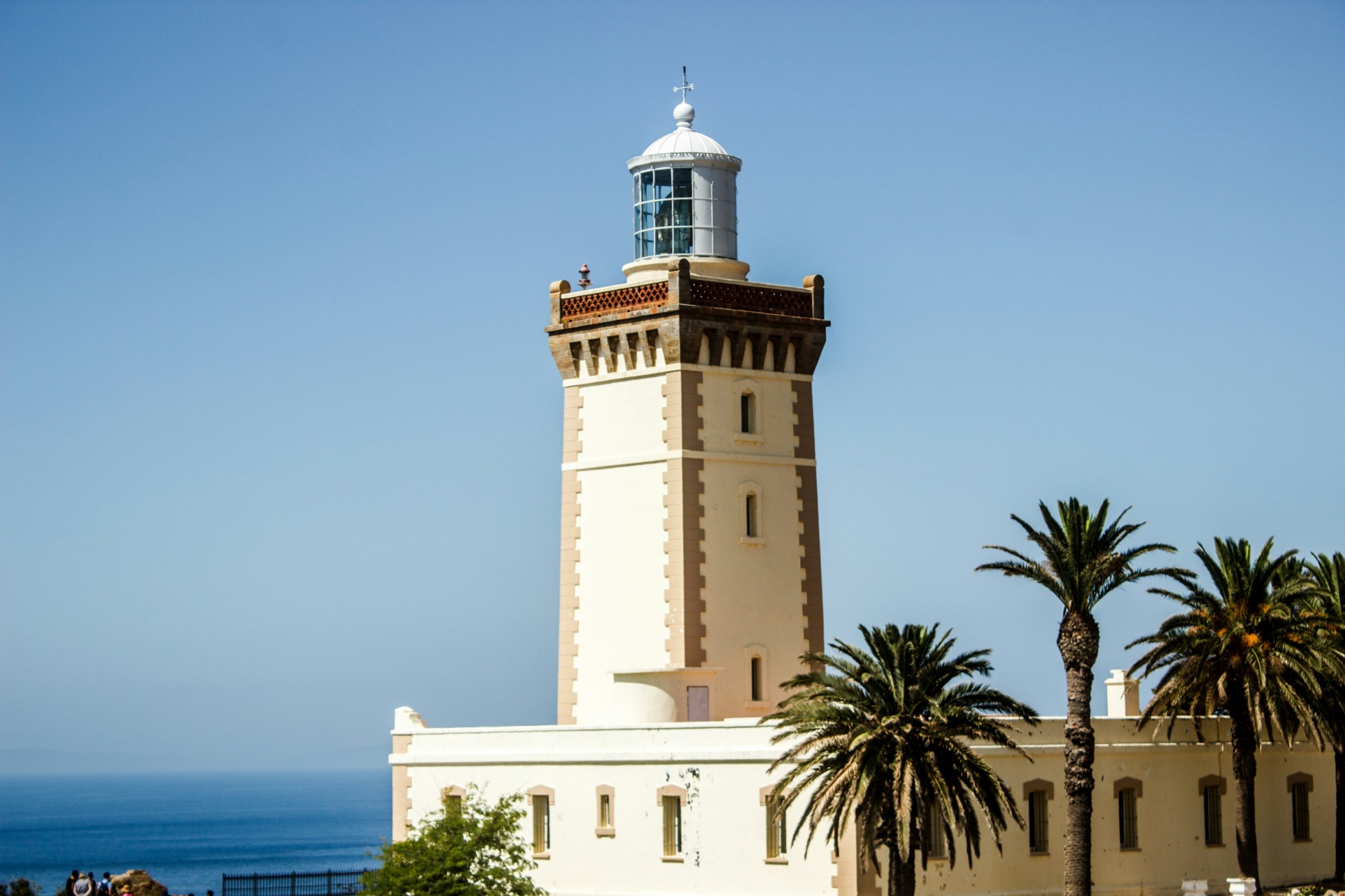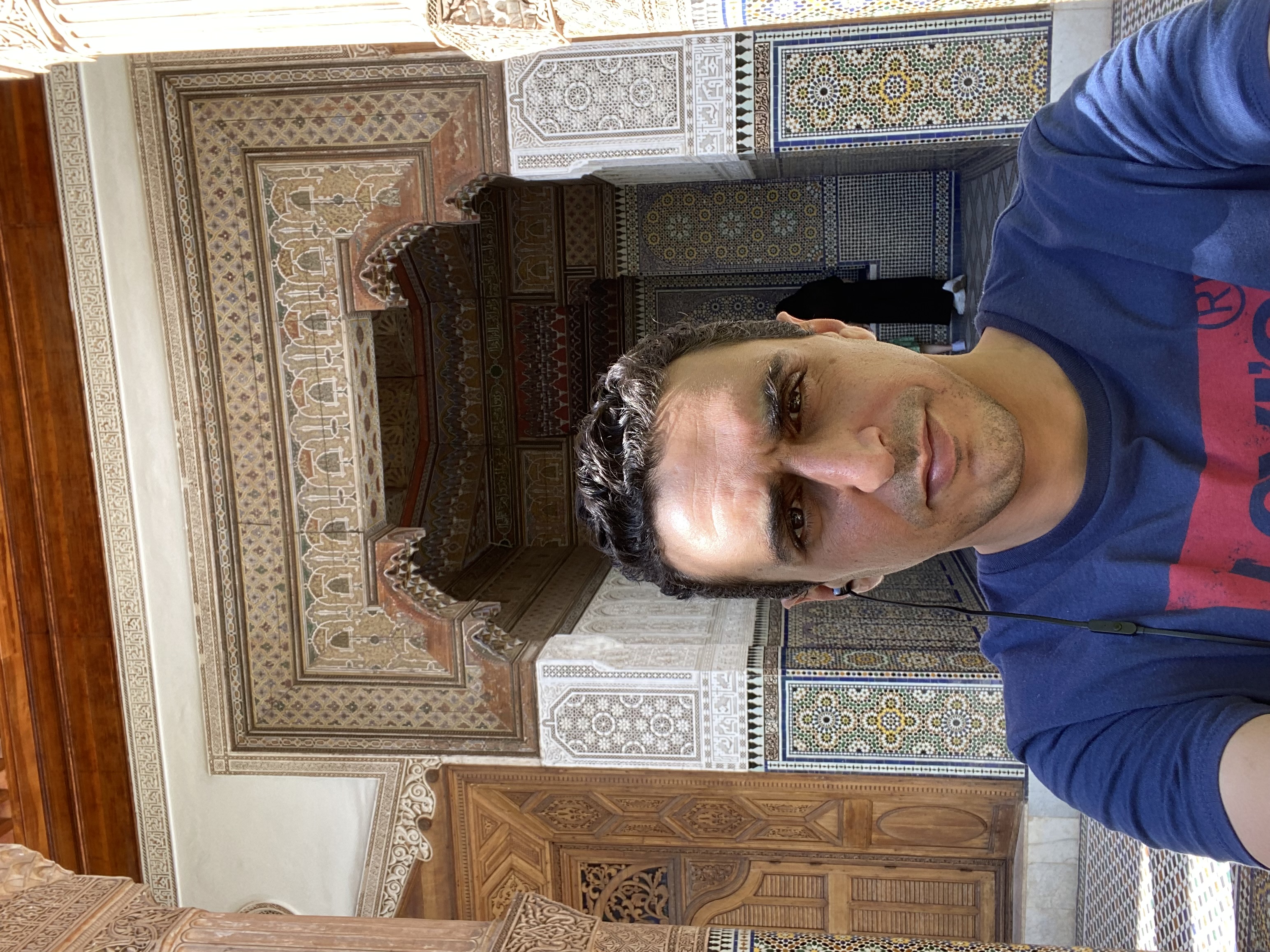
Curator’s statement
This four-day journey is perfect for those seeking a quick introduction to Morocco while traveling to Spain. It offers a glimpse into Morocco's diversity, highlighting a facet that is not well known worldwide, distinct from the iconic Sahara Desert or the cities of Fez and Marrakech. As a crossroads between Europe, Africa, and the Orient, the diverse architecture in Tangier, Asilah and Chefchaouen reflects the fusion of Berber, Arabo-Andalusian and European influences. This blending is best symbolized by the sight of Spain from Tangier or the panoramic views from Cap Spartel, where the Atlantic Ocean meets the Mediterranean Sea.
The Fora Difference
Book with Yassine to access exclusive perks and experiences on your trip.
Killer perks
Free upgrades, spa credits and more—we got you
Personalized recs
Customized travel planning for your style
Insider knowledge
Expert advice from people who’ve actually been there
Where to stay
Unlock perks by contacting Yassine to book your trip.
Day 1: Arrive in Tangier from Spain

Arrive in Tangier via ferry from Algeciras or Tarifa, Spain. Enjoy the sights while traversing the Gibraltar Strait, preparing for a short but stunning adventure. Note that there are multiple daily ferries, with varying durations ranging from one to three hours, going either to Tangier Port or Tangier Med Port depending on the chosen option. If prone to seasickness, consider opting for a longer duration ferry for a smoother journey.
Upon arrival, proceed to check-in at your accommodation, where you can drop off your luggage and take a moment to refresh. For lunch, consider fresh fish prepared in traditional Moroccan style. From aromatic tagines to grilled seafood, the local cuisine offers an array of flavors and spices.
Start your discovery of Tangier with a walk around the old medina, where you'll encounter numerous landmarks. Begin at the Grand Socco, a lively square that has served as a commercial hub for centuries. The name "Grand Socco" is derived from the Spanish word for market, "zoco." This area is where traders, locals, and travelers have mingled for generations.
Next, head to the Kasbah and its museum. The Kasbah is an ancient fortress that once served as the Sultan's palace. The museum displays a fascinating collection of artifacts that tell the story of Tangier's rich history, from prehistoric times to the present.
Continue to the Hôtel Continental, an iconic establishment that has welcomed dignitaries, writers, and adventurers since the 19th century. This grand hotel, overlooking the harbor, was a favorite of famous figures such as Winston Churchill and Tennessee Williams, who found inspiration within its walls.
Stroll over to Place Petit Socco, a charming plaza in the heart of the medina. This small square has been a meeting place for artists, writers, and musicians throughout the years. Notable personalities like Paul Bowles and William S. Burroughs frequented the cafes here.
Visit the Legation Museum, formerly housing the United States diplomatic mission to Morocco. Opened in 1821, it offers insights into Tangier's role in international diplomacy and the special relationship between Morocco and the United States. Fun fact: Morocco was the first country to recognize the independence of the United States in 1777.
As you wander through the Medina, you'll also come across historic landmarks like Bab Al Bhar (the door to the sea) and Dar Al Baroud (the house of gunpowder). These sites are reminders of Tangier's strategic importance as a gateway between Africa and Europe.
As the day comes to a close, head to Café Al Hafa. This legendary café, situated on cliffs overlooking the Strait of Gibraltar, offers stunning views and has been a favorite spot for famous writers and artists such as the Rolling Stones, Allen Ginsberg, Yves Saint Laurent, and Jean Genet since the 1920s. Enjoy a cup of mint tea as you watch the sun set over the strait.
Finally, relax by La Corniche. Settle in at a terrace and enjoy some local delicacies for dinner before heading back to your hotel.
Day 2: Tangier to Chefchaouen via Cap Spartel, Hercules Grotto and Akchour

Begin your day with a visit to Cap Spartel, where the Atlantic Ocean meets the Mediterranean Sea. The lighthouse here offers breathtaking views. Afterward, head to the Hercules Grotto to explore the legendary cavess. According to the myth, the grotto is where Hercules rested after completing one of his Twelve Labors. Legend has it that he created the strait by smashing through a mountain that connected Europe and Africa, forming what are now known as the Pillars of Hercules – one in Europe (the Rock of Gibraltar) and one in Africa (Jebel Musa in Morocco). The Hercules Grotto is also linked to the legend of Cleopatra, who, according to local folklore, used these caves as a romantic getaway with Mark Antony.
Drive to Akchour, a journey that takes about one-and-a-half hours. Upon arrival, enjoy a picnic or dine at a local restaurant, and rest a little. Spend your afternoon exploring the natural beauty of Akchour. Hike to the stunning Akchour Waterfalls, where you can enjoy the refreshing sights and sounds of cascading water. Don't miss the God's Bridge, a remarkable rock formation that offers impressive views and photo opportunities. The trails here are perfect for immersing yourself in nature and experiencing the tranquility of the area.
After your adventure in Akchour, continue your journey to Chefchaouen, which takes about 1 hour. Once you arrive, check in to your accommodation and settle in. For dinner, enjoy a meal at a local restaurant, and go for a little walk in the evening to start the discovery of this stunning city. End your day with a good night's rest in Chefchaouen, ready to explore more of this town tomorrow.
Day 3: Explore Chefchaouen

Start your day in Chefchaouen with a traditional Moroccan breakfast, indulging in local delicacies. Afterward, go on a walk through the enchanting blue-painted streets of the medina. The entire city is a landmark, with each street having its unique charm. Chefchaouen is not only one of the most beautiful cities you’ll ever visit, but it also has a unique, relaxing aura that affects everyone who walks through it.
During your exploration, be sure to make stops at key landmarks. Begin by passing through the Bab el Mahrouk gate. As you descend the iconic blue stairs, you'll arrive at Plaza Outa el-Hamam, home to the grand mosque and the historic Kasbah of Chefchaouen. This fortress, dating back to 1471, boasts beautiful gardens and a small museum that offers insights into the region's rich history.
For lunch, choose one of the charming cafes in Plaza Outa el-Hamam and savor the flavors of Moroccan cuisine while enjoying the atmosphere of the square.
Continue your journey to Plaza El Haouta, another beautiful spot within the medina. From here, make your way to the source of Ras El Ma, where locals gather water and engage in activities like laundry. Nearby, don't miss the opportunity to visit the abandoned Spanish Mosque, which provides breathtaking panoramic views of the city and its surrounding mountains.
As you explore, you'll encounter numerous shops and craftsmen offering a variety of handmade goods and artisanal products, perfect for picking up souvenirs or gifts to remember your time in Chefchaouen.
As evening approaches, indulge in dinner at a local restaurant, and take a final walk through the beautifully illuminated medina. Retire for the night in Chefchaouen, rejuvenated and ready to continue your journey tomorrow.
Day 4: Chefchaouen to Tangier via Larache, Lixus and Asilah

In the morning, depart for Larache, a journey that takes approximately two hours and offers stunning views of Northern Morocco's landscapes. Originally established by the Phoenicians, Larache has been home to multiple civilizations, including the Carthaginians, Romans, and Arabs. While there is no direct evidence of Viking settlements in Larache itself, historical accounts and archaeological findings suggest their presence through small trading posts. Begin your exploration at Plaza de España, then wander through the ancient streets of the medina. Dive deeper into the region's history at the Archaeological Museum, where artifacts offer insights into Larache's significance.
Continue your journey to Lixus, a short drive of about 15 minutes. Explore the ancient ruins of this Phoenician and Roman city, perched atop a hill. Lixus' history dates back to its Phoenician origins in the seventh-century BCE, later evolving into a Roman colony in the 1st century CE. Discover remnants of salt production workshops, an amphitheater, a basilica, residences, and fortifications. Conclude your journey at the museum, where exhibits chronicle Lixus' past.
Next, arrive in Asilah, renowned for its artistic heritage. Experience the town's vibrant art scene as you admire street art at evry corner and explore small shops throughout the medina. Discover the ancient ramparts, built by the Portuguese in the 15th century, and marvel at the beautiful facades. Don't miss landmarks like the imposing tower and the Grand Mosque. Consider visiting the Raissouni Palace courtyard, home to the Hassan II Center for International Encounters.
Finally, return to Tangier, marking the end of your journey through Northern Morocco.
Need to know
This journey serves as a true testament to the country's ancient Mediterranean roots with sites like the Hercules Caves and the Phoenician ruins of Lixus, both steeped in Greek mythology.
Finally, this voyage offers stunning landscapes, from the shores of Oued Laou to the natural beauty of Akchour, providing not only the opportunity for new discoveries but also the chance to rejuvenate the soul.

Travel Advisor
Yassine Bouaichi

Get in touch with Yassine
Did you like this guide? Reach out to customize and book your own experience. Or, just to chat about travel in general.
You can expect a response from Yassine within 1–2 business days. You’ll also be subscribed to our traveler newsletter (you can unsubscribe at any time).
This itinerary is part of our ongoing series on travel to Morocco. For more travel tips, check out Fora Advisor Arlette Diederiks’s itinerary, Moorish Adventure in the South of Spain: 7 Days in Andalucia.